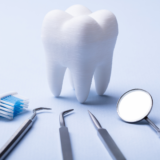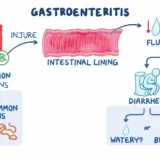What is ECG?
ECG stands for electrocardiogram. It is a medical test that measures the electrical activity of the heart. The test is done by placing electrodes on the skin of the chest, arms, and legs. These electrodes pick up the electrical signals generated by the heart as it beats and transmit them to a machine that records the signals as a series of waves.
The resulting electrocardiogram provides doctors with important information about the heart’s rhythm and function. It can help diagnose various heart conditions, such as arrhythmias, heart attacks, and heart failure. It is a non-invasive, painless, and quick test that can be performed in a doctor’s office, hospital, or clinic.
What are the symptoms of ECG?
ECG (electrocardiogram) is a medical test used to measure the electrical activity of the heart, so it is not a symptom itself. However, an abnormal ECG may indicate underlying heart conditions that can present with a variety of symptoms, including:
- Chest pain or discomfort
- Shortness of breath
- Irregular heartbeat
- Fatigue or weakness
- Dizziness or lightheadedness
- Fainting or near-fainting
- Swelling in the legs or ankles
- Rapid or slow heartbeat
- High or low blood pressure
- Sweating
It is important to note that not all heart conditions present with symptoms, which is why an ECG may be performed as a routine test in some cases. If you are experiencing any of these symptoms, it is important to seek medical attention immediately, as they may indicate a serious heart condition that requires prompt diagnosis and treatment.
What are the causes of ECG?
ECG (electrocardiogram) is not caused by any specific condition, but rather it is a medical test used to diagnose various heart conditions. However, the following are some conditions that may cause an abnormal ECG:
- Arrhythmias (abnormal heart rhythms)
- Heart attacks
- Heart failure
- Coronary artery disease
- Inherited heart conditions, such as Long QT syndrome or Brugada syndrome
- Electrolyte imbalances, such as low potassium or magnesium levels
- Inflammation of the heart, such as myocarditis or pericarditis
- Drug or medication toxicity
- Congenital heart defects
- Trauma or injury to the chest or heart
It is important to note that a normal ECG does not necessarily rule out the presence of heart disease, as some heart conditions may not be detected by this test. If you are experiencing symptoms of a heart condition or have risk factors for heart disease, your doctor may recommend an ECG or other diagnostic tests to evaluate your heart health.
What are the treatment of ECG?
ECG (electrocardiogram) is a diagnostic test used to identify various heart conditions, so it does not require treatment itself. However, if an abnormal ECG indicates an underlying heart condition, treatment will depend on the specific diagnosis.
Some common treatments for heart conditions may include:
- Medications: Certain medications, such as beta-blockers, calcium channel blockers, or anti-arrhythmic drugs, may be prescribed to control heart rate, rhythm, or blood pressure.
- Lifestyle modifications: Making healthy lifestyle choices, such as eating a heart-healthy diet, exercising regularly, quitting smoking, and managing stress, can help improve heart health.
- Procedures: In some cases, procedures such as cardiac catheterization, angioplasty, or implantation of a pacemaker or defibrillator may be necessary to treat certain heart conditions.
- Surgery: Some heart conditions, such as heart valve disease or coronary artery disease, may require surgical intervention, such as valve repair or replacement or bypass surgery.
It is important to work closely with your doctor to develop a treatment plan that is tailored to your specific needs and health goals.
What are the benefits of ECG?
ECG (electrocardiogram) is a valuable medical test that provides several benefits, including:
- Early detection of heart disease: ECG can detect heart conditions such as arrhythmias, heart attacks, and heart failure at an early stage, which can help doctors start treatment early and prevent complications.
- Quick and non-invasive: ECG is a quick and non-invasive test that can be performed in a doctor’s office, hospital, or clinic without any special preparation.
- Helps guide treatment: The results of an ECG can help doctors determine the appropriate treatment for various heart conditions and monitor the effectiveness of the treatment.
- Useful in routine checkups: ECG is often used as a routine test in people with risk factors for heart disease, such as high blood pressure, diabetes, or a family history of heart disease, to detect any signs of heart problems early.
- Safe: ECG is a safe test that does not involve any radiation or major risks.
Overall, ECG is an important tool in the diagnosis and management of various heart conditions, and it can help improve outcomes and quality of life for people with heart disease.


